 Pin
Pin 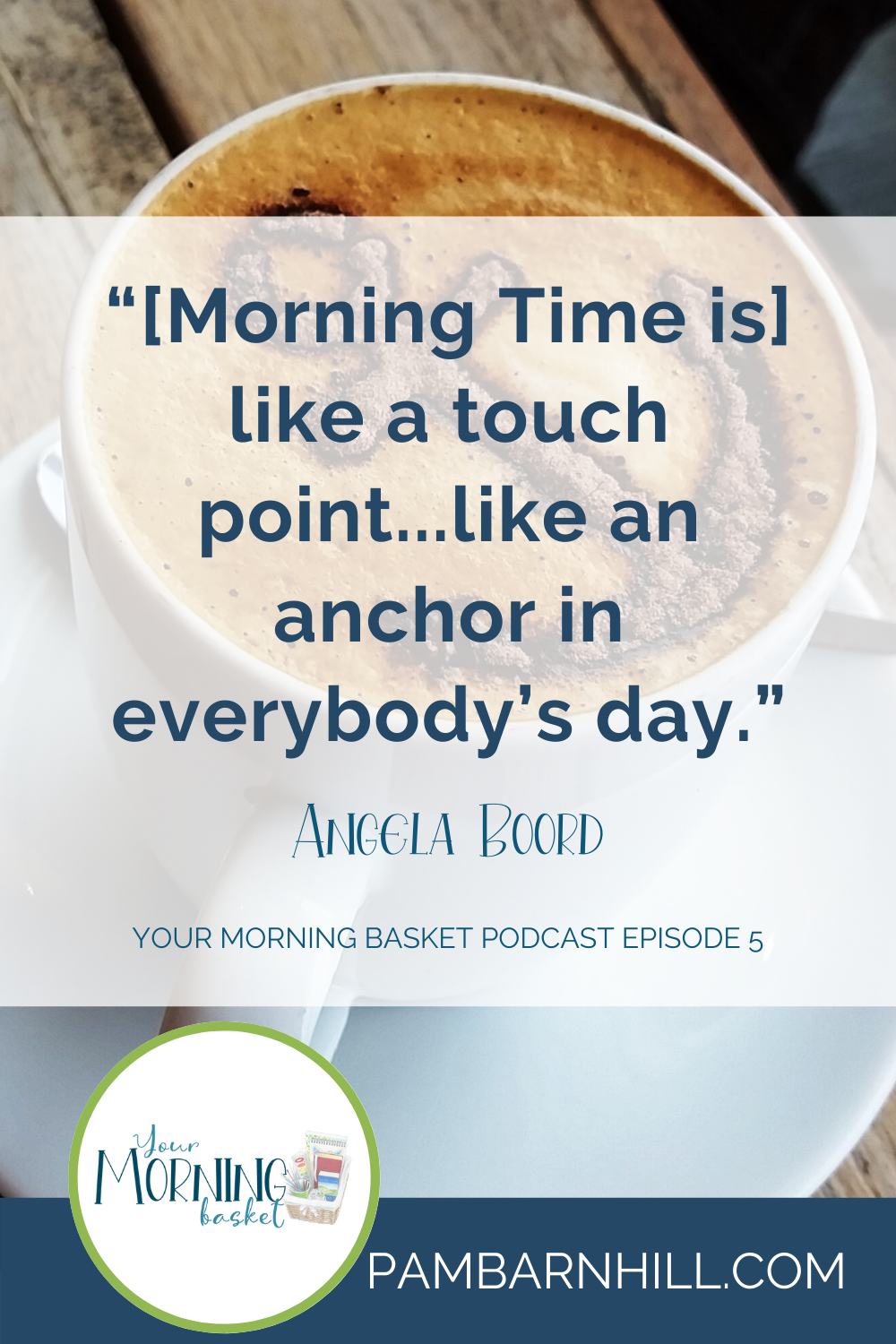
Angela Boord has eight (soon to be nine!) children, so she knows all about making life work in a large family. She joins us today on the podcast to talk about creating and sustaining a Morning Time routine that is meaningful and worthwhile for everyone, from teens to toddlers.
Angela shares some great advice for keeping little hands busy, accommodating teens and their packed schedules, and tackling important subjects in a way that meets the needs of big kids and little kids alike. She also shares how Morning Time has helped build a shared culture and sense of belonging in her family. Angela’s wisdom is both practical and inspiring, making this an interview not to be missed.
Pam: This is Your Morning Basket where we help you bring Truth, Goodness, and Beauty to your homeschool day. Hi everyone, and welcome to episode 5 of Your Morning Basket. I’m Pam Barnhill, your host, and this week we have a great show for you guys. I’m interviewing Angela Boord. She is a mom of eight with one on the way, so soon to be nine, and she has been homeschooling her children from the very beginning, their first just graduated from high school this past summer, and she has been doing Morning Time in her home for 10 years. Now, her children range in age (at the time of the interview) from 18 all the way down to 2. So Angela and I are going to be chatting a lot about how to do Morning Time with a very wide span of age ranges and we’re also going to be talking a lot about how to do Morning Time with a lot of little guys underfoot. And I know this is something that you guys have been wanting to hear, and I’m just super excited to bring you this interview, so hey, let’s get on with the program.
I often hear questions about how to do Morning Time when you have many kids spanning a wide range of ages or when there is a big age gap between your kids. Angela Boord is just the person to help us figure out some answers to those questions. Angela, who blogs at Three Plus Two Homeschooling is a mom of eight and they range in age from teens all the way down to little ones, a two year old, and she’s here today to share some of her insights about Morning Time with a large family. Angela, welcome to the program.
Angela: Hi, Pam. I’m glad to be here.
Pam: I’m so happy to have you. I have been a fan of yours for a number of years now. You’re one of my mama heroes.
Angela: That’s kind of funny. Thank you.
Pam: Well, I’m happy you’re here to talk to us about Morning Time. I’ve loved watching your family through the years on your blog and seeing all of the wonderful things you do and, kind of, your relaxed classical style of homeschooling. Well, tell me a little bit about your kids and their ages and your family.
Angela: I have eight. We have one on the way, we’re expecting in early February [2016].
Pam: Congratulations.
Angela: Thank you. And my oldest is 18; we’re going to take him to college in about a week and a half, so he’s going to be out of the house. It’s kind of strange because we’ve homeschooled all the way through, and then next is my only girl (I have seven boys and one girl). My one girl is 16. Then there’s a gap and then the boys are a lot closer; I have a 12 year old, 9 year old twins, 8 year old, 5 year old, and a 2 year old.
Pam: Definitely got that wide age range covered.
Angela: Right, a big span there.
Pam: Lots of energetic and wiggly boys as well which is an added bonus to this conversation about doing Morning Time. How long have you been doing Morning Time and what inspired you to start doing it with your children?
Angela: I think about 10 years, at least, as a more formal time. But really, I think the seeds of it started a bit earlier. The first thing that started us on this time in the morning where you would get together when my oldest two were little and we just started homeschooling and at that time (I’m a cradle Catholic) I had left the church for awhile and at the time when we started homeschooling I started to come back into the church and I was concerned that our Bible reading which I wanted to do with the kids got squeezed out because at that time it was an accepted practice that you would start your day with math that was the accepted thing and then after that you would do handwriting; you would do your lessons in the morning and then maybe have your read alouds in the afternoon, but I found that by afternoon I was tired, the things that were not happening were things that were important to me. I wanted to read to the kids from the Story Bible but those things were getting pushed aside and so I thought if I did it first then I wouldn’t forget. So we would read from the Story Bible and over the years I started adding things and it really started as a four time when I was pregnant with twins and we had just moved from St. Louis to Upstate New York and we were in a rented house on a dairy farm which actually sounds very romantic but it wasn’t, it smelled like cows and it was an interesting experience, and I needed to spend a lot of time on the couch at that point. So what I would do is I would sit down on the couch and I would read our Bible, and at that time I only three; I had an 8 year old, a 6 year old, and a 2 year old, and I was pregnant with twins, so I would sit on the couch and I would read the Bible but they would often (my two oldest) would often get their notebooks or their coloring books and crayons/markers and they would just sit on the floor and start coloring, and they would be coloring and working and paying attention. They were ready for more, they wanted to hear more, so we would just start to add more. I read through that summer several of Laura Ingalls Wilder series and then we took a vacation in Rhode Island and we read about the seashore and read some picture books about the seashore and read the One Small Square books Seashore. We read Dr. Doolittle that year. And it stuck, because it was a good way to do things. At first I read over breakfast and that changed later on as they got older, and we just built on it until a few years ago when I really decided to get a little more serious with it and then it expanded.
Pam: So this was a very organic beginning to the practice that became Morning Time in your house?
Angela: Right, right. It just sort of grew up. It grew up from what we needed. And then when the twins were born and then I had twins, and twins are twins, you’re just busy ALL the time, but then right after the twins my next child is only 22 months apart, so he’s like the third twin is what we call him, and when you’re dealing with so many little people, you’re thinking, ‘OK, if the day goes totally wrong what should I have wanted to have done?’ I wanted to feel like some sort of accomplishment with the day and we would add things- we would say our prayers, we’re going to read from the Bible, we’re going to do a Catechism question. If we get that done then it all feels better because we would have done something and then there’s still more time because things aren’t totally self-destructing at that point; we’d read some read alouds, maybe some history. If we got 45 minutes (which 45 minutes was a long time at that point) it was good. We didn’t do any math or anything like that, but we got a good chunk of something done in our day.
Pam: It sounds like there were lots of wonderful subjects in that short period of time that you got done and it was a lifeline for you through all this time of little bitty kids.
Angela: It was. And you know what, it still is for the kids. They still need that time; it’s just that something we’ve done every day. In this summer we haven’t sat down because I’ve been feeling sick and people have been here and there, it’s summertime, and even when we’re not reading and we’re not doing all this stuff we usually say our prayers and we look at the liturgical calendar, who’s the saint [**inaudible** 8:33] of the day and it’s like a touch point, it’s an anchor in everybody’s day, and when it’s gone and everybody’s sort of adrift and it can’t be gone for too long or the kids will start asking about it, “When are we going to start again?” And even the teenagers they’ll just go automatically and sit down on the couch and wait. It becomes like an institution in your life.
Pam: You said a few years ago you got more intentional with it, so can you tell me a little bit how it’s changed from that point? I would say as your children have gotten older but you still have little ones as well so what do you mean by ‘started to get more intentional a few years ago’ what are the things you are doing now in Morning Time?
Angela: It got more intentional because I had to account for the teenagers and when we moved from New York to Mississippi it was a very stressful time. We did that five years ago. We’ve been in Mississippi for five years. My oldest at that time was 8th grade age. The Morning Time split that year and I didn’t read aloud. I didn’t read aloud in the morning, it got too much to handle with all the differences in age and I was having some health problems after a complicated recovery, I had a newborn. My husband’s father had a heart attack and he went through surgery and there was a lot of stuff that he was going through and then we had just moved and life just seemed like it was too much to handle and so we went for many months without doing a Morning Time and then the little kids because the twins when we moved were five, I had a 3 year old and a newborn, and they were just at each other like little boys, so again, I said, ‘This is too hard, I’m not going to do it right now.’ And it was kind of a miserable time and after a while I thought it is worth it, I’m going to put it back in. I think it was after that I started adding things back in what we would normally do, and I think other people started posting more on blogs. There was Jen Mackintosh’s Morning Basket post and I read Cindy Rollins’ Morning Time posts and then she did the 31 days of Morning Time, then I read Kendra Fletcher’s Circle Time e-books too. It felt like a lot of people were doing more than we were doing, it was more of a planned time. And as the kids got older (the older kids got older), I started looking at it as a time when I could have us all do something and all be exposed to something that I really wanted them to be exposed to or to talk about or to discuss as a family that they maybe would not as easily be willing to do independently, maybe it just didn’t run toward their interest. I started looking at it like I wanted it to be a good use of their time because in high school teenagers tend to get really busy and then they could say things like, “Well, I don’t have time for this, I have to … I have too much Latin homework … I have too much math homework … I have too much of [this] stuff to do so if I take this much time out then I’m not going to be able to put it into x y z.” So what I wanted it to do, I wanted it not to feel extra to them. It wasn’t extra, but I didn’t want it to feel extra to them. I wanted to use our time that we had to the fullest and so I started trying to think a little bit harder about the stuff that I did with everybody and plus with the age range it got a little harder to figure out because I used to gear just toward the older kids and the younger kids would wander in and out and they would take part and listen to some stuff and some stuff they’d listen to was surprising that they would actually sit and listen and then I started thinking. I was trying to aim this at more of the younger kids got older they’re officially being homeschooled too so I have to do things with them as well. It required a little more thought.
Pam: Let’s talk a little bit about some of those challenges, of planning and implementing a good Morning Time with a wide age range of kids, so how do you go about doing this, is there a certain age group you shoot for or how do you start making those plans?
Angela: I tend to shoot for the middle because most of the time shooting for that middle school age range then the younger kids can keep up (maybe not the youngest kids, they stay for prayers and we talk about saints and then they can have other things to do but they don’t have to pay attention, so the younger elementary kids can follow along, and then the older kids it will still be decent for them too. I find there are some things like classic literature just has a wide age range anyway, so that’s what we look at it. Actually, it surprised me, we read Julius Caesar and I had my eight year olds actually reading part of it, we read it aloud so everyone took different parts and my eight year olds did it and my 18 year old did it and it was fun, stuff like that. Then I also look at what my teenagers might need to fill in any gap they have in their high school plan. Last year I realized that they hadn’t done any logic, and my husband and I thought that Logic was an important part of the curriculum because we relaxed but we have also classical ideals and so we wanted them to get that before they got out of the house because we thought it would be helpful to them. Those things seem extra and they get pushed out and they’re not extra, they’re really necessary but because we’re not used to think of them that way they can already get pushed to the side. So I just decided to use, to fill that gap, I thought that I could use the Bluedom’s Fallacy Detective to fill that gap and we could do it and it would cover the age range because it’s meant to be used as a family, and so I sat down and that was really surprising because everybody loved it and we had some great conversation and kids who actually like it the most were my twins (they turned nine so they were eight but they would be roughly 3rd grade, and they would read ahead but it was good for the teenagers. Now we watched recently the Presidential Debate and the kids are yelling out stuff, “That’s a red herring!” so it was good, everybody got something out of that. And that’s what I aim for and hope for when I’m trying to pick through material.
Pam: That’s awesome because you took something, you used your Morning Time to fill in a gap that your older kids had so you’re definitely gearing it to a need that you see for your highschoolers but everybody in the family got something out of it, so that’s wonderful.
Let’s talk a little bit about some Morning Time subjects or practices that lend themselves best to a wide range of kids, what do you find? You’ve hinted at the fact that your Bible and saints works really well for a very wide range of kids but what other subjects work well for you guys?
Angela: We also do some memory work and most of our memory work tends to be Latin, when we’re using it, being Catholic we do learn more Latin so we learn a lot of prayers in Latin and that’s good for everybody. I’ve tried to introduce memorizing poetry and I have never been consistent about doing it, so we haven’t done it that much. Stuff like memory work that works well when we do that. We did some Shakespeare last year and that was good, everybody enjoyed that. And like I said for classic literature, I knew my older kids would enjoy Tom Sawyer and Huckleberry Finn that I knew they wouldn’t pick them up on their own to read them because the dialect in those books is hard and you can edit when you’re reading it, so I read it aloud and they became some of everybody’s favorite books, and it wasn’t just the older kids, it was the younger kids too. I have one dyslexic child, he’s my 12 year old, and he reads great now, but at the time, I think he was 9 or 10, he couldn’t read at all, so that was terrific because he loved those books and he would never have been able to read anything like that but it was good because I got to put them on a high school transcript as well. The literature works really well. We read, A Christmas Carol to the age range of the teenagers down and Shakespeare, I have boys so they don’t like the comedies as much because they’re all about romance so we have to read tragedies but everyone’s a great fan of Macbeth but Shakespeare works pretty well, and anything you want to learn as a family is good. When we did Logic, that was great, that worked really well. So if there is anything that anyone wants to do like art, we’ve done art as a family, we didn’t do it in Morning Time but easily we could work it in there. Our house is not set up right now to where it’s very easy to do a lot of art while I read and that was the mainstay of our Morning Time earlier, when the kids were younger. We had a table and couch so I could sit and read and the little guys could go all over me while I read and anybody who wanted to draw could be at the table drawing because supposing there was a problem that when you dry on the floor like they used to the little guys tend to come up and draw crayons everywhere so that’s not so great. So our house isn’t set up but art is good to do because it keeps their hands busy so they can pay attention more, and you can listen, so it’s like getting two things done at the same time. We had a block of clay once and the kids would just work with the clay and they made this giant world (it was a huge block of clay) and they would make mushrooms and frogs and little things sticking out of the clay while I read and I got a lot read, it was great.
Pam: So definitely this is not a situation where all of your children are sitting with their hands folded politely in their laps? They’re actually working and doing something as you’re reading during Morning Time.
Angela: Nobody ever sits politely with their hands folded in their lap. They’re sometimes standing on their heads and doing everything else…
Pam: But they’re still listening.
Angela: Yes, usually. Sometimes, I guess. Sometimes you end up having to separate people, you can’t sit next to [this person] because it’s like being in a classroom.
Pam: Right. Well, you mentioned earlier that your little guys, your youngest ones for stay for Bible reading and prayer and then they would wander off, but not too far. So how did you handle that? Did you corral everybody to a single room? Did you have toys there for them to play with? How do you do Morning Time (and I know you have a two year old now) when you have so many moving parts plus a four year old and a two year old who are present?
Angela: Usually when you’re all in a place the little ones want to stay close to you and especially if I sit down that’s a big draw for them, because if I sit down then they’re immediately on top of me, for at least part of the time. You have to learn how to read and how to talk over people crawling on your back and going over your head and three people on the rocking chair with you. They usually spend part of their time like that and then we read right now we have all the Duplos and the blocks are in our family room and that’s where we read and say our prayers, that’s where we do our Morning Time and so they’ll often just sit down and build while we’re reading. Sometimes I need to have a hand because they’re boys and they can’t just build anything quietly, it has to have explosion noises and it gets a little wild sometimes, but for the most part that’s OK. Or, just right around the corner, we don’t have a dining room but we have an eat-in kitchen with our big table in it and we have shelves beside the table that has everybody’s homeschool in them but I also have some shelves with art stuff that the little guys can use without making a giant mess. So there’s Playdo (although Playdo can make a giant mess, but usually it’s OK).
Pam: It’s an acceptable mess.
Angela: Yes. Then there’s crayons. My two year old right now he loves to color, he loves drawing and crayons and he’ll stay there for a surprisingly long time coloring but not all the boys were like that. That’s available to them, they can do that. And our house is such that their bedroom is not very far away, so if they go into their bedroom to play and there are some more toys in there, a little toy kitchen, etc. if they go into their bedroom I can still hear them and I know what they’re doing. Sometimes my five year old will go outside and that’s OK because I can see through the window. When we were in New York when they were younger we did most of our stuff (read etc.) in the front room and we had a lot of toys in that whole big front room and so they would mostly stay right there, sometimes they would run back to their room, but again, you can hear what they’re doing, or if they got really quiet …
Pam: Then you know there’s trouble.
Angela: Right, exactly. And then if we were reading, we did a lot of school work in our dining area too. And that had the few months that we could enjoy outside in Upstate New York, it had a door to the deck and we fenced in a small area, because we had 15 acres in New York, it was a 2-acre yard and 13-acre field and we had a busy road in front of us because logging trucks used to go back and forth on that road really fast and it was scary, so we fenced in an area around our deck and we called it “The Little Boy Yard” and they could go out on the deck and they could play outside and we could still see them through the big window and they were OK back there. They could dig in the dirt, they could dress up and run around with swords and that would keep them busy and you could get a little bit more time in.
Pam: It sounds like you’ve worked with the various layouts with your houses and used the fact that everybody’s together to encourage them to stay with you but then when they’ve needed to wander a little bit just being able to keep your ear or eye on them and letting them wander as they need to.
Angela: Right, because if they go too far and you don’t know what they’re doing then that could be bad because you can end up with some stuff that could be dangerous or even if your house is childproof you still end up with people dumping stuff out of cabinets.
Pam: You sound like you’re speaking from experience there.
Angela: Oh yeah.
Pam: Well, it sounds like for the most part all of your kids do Morning Time together other than the little guys who might wander away or wander in and out at times. Is there any time where you have your older kids excused from Morning Time and you carry on with the younger kids?
Angela: Yes, because we ran into that. It was a problem that I had to figure out how to deal with when a couple of years ago we signed the two older kids up for an outside co-op class and two days a week they would leave the house, they had to be there at 10:00am and my mother-in-law actually drove them there which was very helpful but they had to leave about 9:15/9:30am or something like that and sometimes our Morning Time does not happen very early. And I would try to get it going before that so we could at least pray together and then go and it didn’t work because we try to get our chores done first so that they’re out of the way and that’s just cleaning the kitchen, starting laundry (my daughter usually folds a basket and puts it away), picking everything up that’s been strewn around since the kids got up in the morning, go and get the dirty laundry, that sort of thing, and it just keeps the house moving a little better when we’d do it that way. It was too hard to get all that stuff done and breakfast and dealing with people who were “Oh, I forgot to do this before I went to my class so I have to sit down and do this immediately because I have to turn it in an hour” so we weren’t getting to Morning Time, I was still trying to do it with everybody and it was kind of a loss so finally I said, “OK that’s fine. I’ll have two different versions of Morning Time and on the days that you guys go to your co-op classes I’ll just focus on the younger boys and we’ll just do stuff geared toward them and on the other days we’ll have stuff geared toward everybody just weighted a little more to the older kids and that seemed to work out pretty well. We had to do that last year because they didn’t do any outside of the house classes but they had some online classes that started at 9:00am. My goal is to start what we’re doing at 9:00am but a lot of times that doesn’t exactly happen, but I like to sit down about then. Sitting down earlier is hard for us; we’re not really morning people.
Pam: So having the two versions of Morning Time really helped solve that problem for you?
Angela: Right, and sometimes too, they’ll be excused because they come to me and say, “I have a lot of work to do” and I’ll say, “That’s fine, just stay for prayers, and we’ll talk about what we’re going to do for the rest of the day, get organized, touch base, and you can go.” But what happens in that case all of them would go over to the table in the kitchen and I would be in the other room and I would be reading to the boys and they would interject things from the hallway across the way, because things would resonate with them, either they’ve read through the stuff I’m reading to the boys before or they’ve read stuff related to it. My oldest son who’s going to college now is a big history buff, he’s read an enormous amount of history, he would usually interject historical things like Delores’ Greek Myths and he would interject things while he was doing his Latin. He’s not exactly there but he’s not exactly gone either.
Pam: They can’t get away from it even if they want to.
Angela: Right. It’s kind of funny!
Pam: Speaking of that, what are some elements of Morning Time that you think are important for teens to continue to participate in even after maybe they’ve outgrown some of the other parts, what do you think are most important for teens, no matter what?
Angela: Since we are Christian homeschoolers, prayer is for us, the most important part, because we all need it to get through the day and it doesn’t matter how old you are, so definitely I think it’s important for everybody to participate in prayer, and then outside of that, I really do try to make the time worthwhile for them, so it’s not something that they think is just mom doing that’s extra, so I’m just sitting here to humor her, because she said I needed to. So I really try to do that, I’m not sure I always do that, but I really try to use their time well. And I think our conversations are probably one of the most important parts because when you have conversation with people ranging from 18 down to the five year old interjects things and the teenagers, if they know something, they get to explain it to someone younger than that. It helps solidify what they think and what they know because they know it, and the boys would go a little father in their thinking too because sometimes they’ll ask why or what about this, or I don’t understand, and the teenagers have to go [**inaudible** 30:57] younger boys will challenge things and so there’s not really arguing or bickering but it definitely some positive conversation sometimes but I think that’s good for everybody because it helps people to really feel what they think about various things, and we do have some meaty conversations dealing with theology or politics or history. The kids really think, and I think that’s something they would miss out on if I said, “OK, you can just go ahead and do your assigned work over here while we’re over here doing the other stuff” because I think that’s one of the most important parts, and it also helps to solidify your family culture. That’s the most important part.
Pam: You’ve told me one of the benefits there to having teens all the way down to little ones in the same Morning Time through those conversations and the little guys challenging the teens to cement why they believe what they believe. Are there other benefits to having a wide range of ages from teens to toddlers?
Angela: I think it benefits the little guys, too, because they’re hearing stuff that they normally would not. I do not read aloud to them, if you were just reading aloud to the eight year old it probably wouldn’t go and do something like The Fallacy Detective which I used last year with everybody and most recommendations, if you look for Logic for Convation they will recommend that (and the Well-Trained Mind they’re saying age 12 or 13), even the book the recommendation is for ages 11 and older but in my experience the younger kids really got into it, they enjoyed it quite a bit. I don’t know that every younger kid would, my kids did. And things like that would not happen if you had everybody separated. And they pick up a lot even if you don’t think that they’re listening, they really are, they’re listening more than you think they are. They just sort of soak all this up. It builds a culture too. You have this family culture of shared works and shared practices (I think Cindy Rollins talks a lot about that too) no other family has what you share and it makes everybody feel like they belong together. I would not give it up again, I think even though it is hard sometimes to keep everybody in their seat, gathered together, sometimes it feels really difficult because you’re trying to keep little guys occupied and big kids interested and everybody in the middle and you’re trying to referee conversations, it can go off the deep end at times and it does feel hard just to coordinate everything but I think it’s worth it.
Pam: Sounds like it is. Well, if there’s a mom out there who has a wide range of ages with her children and she’s never done Morning Time before and she’s maybe listening to us and doing a little reading about it and thinking ‘I think I would like to do this but I’m scared to death’ do you have any tips for her for starting out?
Angela: Well, the first thing I would tell her: don’t be scared. It doesn’t have to be perfect. None of this is perfect. It seems like when you write it on a blog or you talk about it and you talk about all the nice things that you do it makes it sound like things are going in a very orderly fashion, making all these transitions from one thing to the next, and everybody’s sitting around and listening to you and you’re all just having these great conversations and that’s not always the case. Our Morning Time’s very loud and sometimes I almost yell to be heard and then you have to reign that back in and then there’s ones that totally disintegrate when you have to go change a blow out diaper and you try to get the other kids to read, like if you have readers – if you have a wide range of ages you usually have somebody who could read – and they can keep up with that and sometimes it doesn’t happen, and sometimes you have arguments instead of conversations, things break down, you have to go to the doctor, people get sick. So it doesn’t have to be perfect. It just matters that you’re trying to do it, and then it builds up over time. When you’re starting out, I would just think most about the things that get squeezed out of the day that you want to make sure you’re doing and you’re sad to see squeezed out of the day, and I would just focus on those first. That’s sort of the key. There may not be a whole of things because you can see that some people have really long Morning Times, ours is not that long. Ours is an average of about 45 minutes, sometimes it’s shorter, sometimes if it’s really good it will go longer, but we don’t do too well with a Morning Time, we have short attention spans in some cases, so we just shoot for what we can get done before everybody totally dissolves. I think the important thing is to not think that you have to do things perfectly, that you have to get to everything that you planned out every day, that you have to read a certain number of pages every day, and if you don’t, you’re failing at it, because that’s not the case.
Pam: I think that’s some great advice. Embrace the messy imperfections of it all but just keep putting one foot in front of the other every day.
Angela: I think that’s the case. And I think more than anything, it’s just the consistency. It’s just the little things that build up over time that make the big difference. It’s not perfection, it’s not ticking off a certain number of things that you read, it’s not trying to jam poetry and music and Shakespeare into everything. It’s doing what you think is important in your family. The stuff that your family would enjoy and that you don’t want them to miss, and don’t worry about doing too much or too little.
Pam: Well, Angela, thank you so much for coming on today and sharing your wisdom with us, this was wonderful to get a peek inside your Morning Time, the craziness of it all and to know that it is still works really well for you and it is something that you wouldn’t give up.
Angela: Well, thanks for having me. I enjoyed talking about it, it’s been one of the best things that we’ve ever done, so I would just encourage everybody who wanted to try it to give it a shot.
Pam: Thanks so much.
For your Basket Bonus this week we are calling out the big guns! We have asked some of our favorite homeschooling moms who do Morning Time, moms who either have large families or a wide range of ages for some of their best Morning Time tips, how do they get it all done. And they’ve shared them with us so we have a wonderful download for you to go and grab. You can head over to EDSnapshots.com/YMB5 to download your Basket Bonus of advice for this episode.
I hope you enjoyed today’s interview with Angela Boord, all about her Morning Time. And if you would like to get links to any of the resources that Angela and I chanted about on today’s show you can go to the Show Notes for today’s episode. There you can also find a link and instructions for how to leave a review on iTunes for the Your Morning Basket podcast, and for those of you who have already left a review we thank you so very much for taking the time to do that. We really appreciate it. The Show Notes for this episode are at EDSnapshots.com/YMB5. And hey, if you like this homeschool mom interview today, I want to let you know about my other podcast. You might not be aware that I do two podcasts; the other one is the Homeschools Snapshots Podcast. You can find that one on iTunes as well. And on every Homeschool Snapshots Podcast I interview a homeschooling mom about what her homeschooling day is like. They’re really short, they’re between 20-30 minutes and they’re a lot of fun, so go check it out. We’ll be back in a couple of weeks with another Your Morning Basket and until then we encourage you to keep seeking Truth, Goodness, and Beauty in your homeschool day.
Links and Resources from Today’s Show
- Angela’s blog: Three Plus Two: Relaxed Homeschooling for Real Life
- Jen Mackintosh’s Morning Basket posts
- Cindy Rollins’ 31 Days to Morning Time posts
- Little House Series by Laura Ingalls Wilder
- One Small Square: Seashore by Donald Silver
- The Story of Dr. Dolittle by Hugh Lofting
- Circle Time: Plan the Best Part of Your Day by Kendra Fletcher
- Julius Caesar by William Shakespeare
- Fallacy Detective by Nathaniel and Hans Bluedorn
- The Adventures of Tom Sawyer by Mark Twain
- The Adventures of Huckleberry Finn by Mark Twain
- A Christmas Carol by Charles Dickens
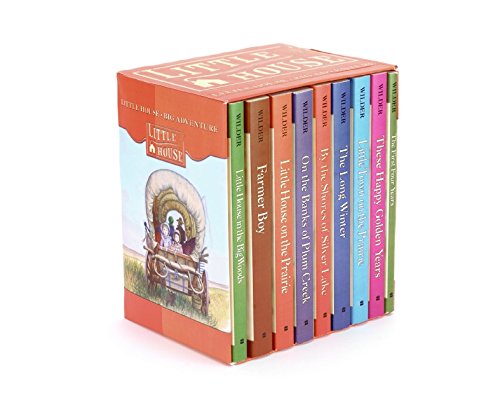
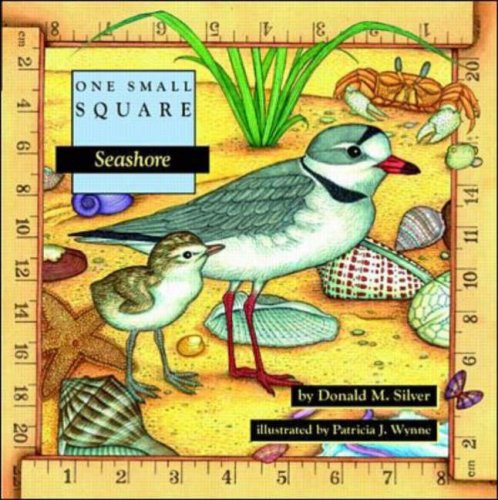



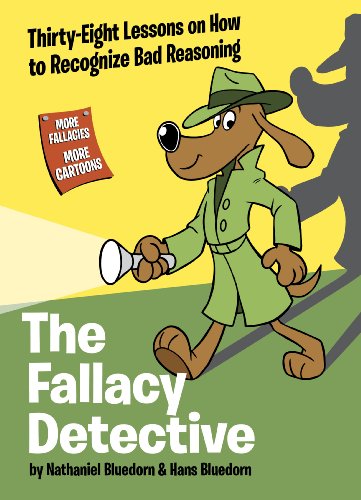
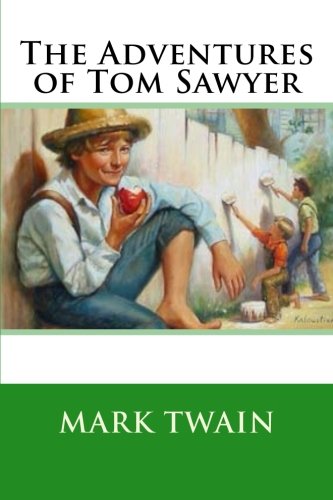
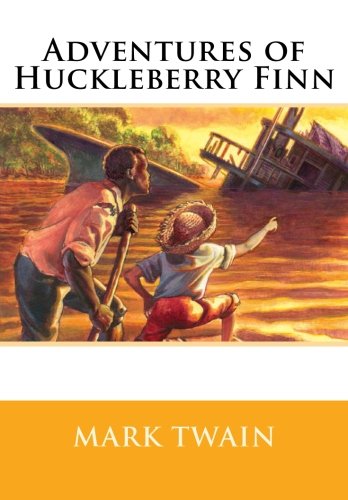

Key Ideas about Morning Time for Big Families
- Subjects and practices that are important to us sometimes get pushed out of our homeschool day. We struggle to find the time or energy for them, especially when also caring for very young children. Morning Time gives us a way to prioritize those items in our daily routine.
- Morning Time nurtures a shared family culture. Everyone hears the same stories and ideas. Younger children are stretched by listening to material they might not otherwise be exposed to, and older children are challenged by having to explain and defend their ideas during discussions.
- Morning Time can be used to fill in gaps in our children’s knowledge and to expose them to books, ideas, and topics that they might not choose to explore on their own.
- Morning Time is a flexible practice. Young children may need to wander or play nearby. Older children may need to be excused because of outside activities, work, or increased academic workloads. Creative solutions allow us to accommodate big kids and little kids alike.
Find What you Want to Hear
- 3:22 how and why Angela started doing Morning Time
- 11:25 how Angela’s Morning Time evolved to include discussions with teens about things they wouldn’t otherwise pick up on their own
- 12:30 Angela talks about “shooting for the middle”
- 14:47 how Angela did Logic during Morning Time with a wide range of kids
- 16:33 subjects that are good for a wide age range
- 18:30 doing Shakespeare with boys
- 18:51 letting kids do art while mom reads
- 20:57 some practical ideas for toddler-wrangling during Morning Time
- 25:30 excusing older kids and having two versions of Morning Time
- 29:17 Angela talks about the most important Morning Time elements for teens and how meaty conversations during Morning Time benefit teens and younger siblings alike
 Pin
PinLeave a Rating or Review
Doing so helps me get the word out about the podcast. iTunes bases their search results on positive ratings, so it really is a blessing — and it’s easy!
- Click on this link to go to the podcast main page.
- Click on Listen on Apple Podcasts under the podcast name.
- Once your iTunes has launched and you are on the podcast page, click on Ratings and Review under the podcast name. There you can leave either or both!
